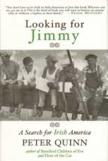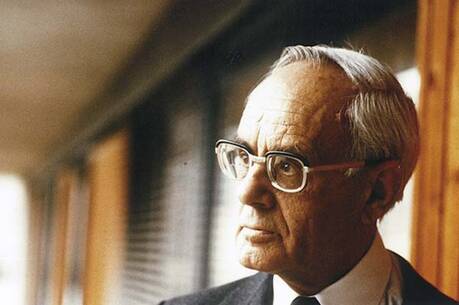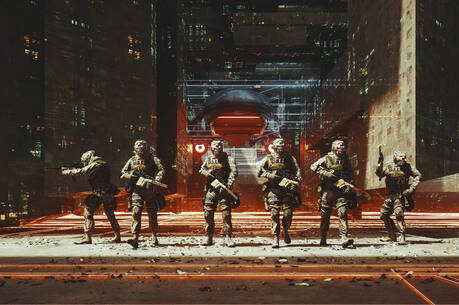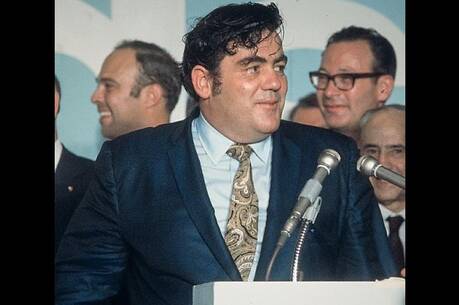A More Fitting Image
The cover for this delightful collection of interconnected essays is the famous photo taken in 1932 of 11 ironworkers enjoying a relaxed lunch break as they sit side by side, perched on an I-beam a thousand feet up in open space overlooking mid-Manhattan, their legs nonchalantly dangling from the skyscraper’s skeleton that is destined to be the G. E. Building at Rockefeller Center.
This photo acts as both a crystallization and inspiration for Peter Quinn, author of two outstanding novels, the historical novel about New York City in the Civil War, Banished Children of Eve, and the 1930’s thriller, Hour of the Cat. As he scrutinizes the Irish faces of the 11 men, he discovers in their lean, wiry, confident, insouciant features resemblances familiar to him 20 years later during his childhood in the 1950’s: “faces of relatives, teachers, priests, Christian Brothers, cops, firemen.” What’s more, “looking at them, I am always struck by the thought that what they are sitting upon is more than merely a beam. It is the hyphen between Irish-American and they are straddling it in perfect equipoise.”
Those obviously mick and, equally obviously, American faces are clues to the book’s title, Looking for Jimmy. As Quinn makes clear, “My Jimmy isn’t an individual but an Irish-American attitude/ essence/distillation.” But Jimmy is also all those and something more: evidence of history’s transformations. He retains on his face an imprint of the terrible Famine years (c. 1845-55), where “in a single generation the Irish went from the most rural people in Western Europe to the most urbanized in North America,” where within a decade a population of eight million-plus was halved by starvation and emigration. Jimmy’s forebears in America were depicted as ugly apes in national cartoons, the “Paddy” character at once brutish, lazy and beneath contempt for his superstitious ways (Catholicism) and ignorance (he likely spoke Irish/Gaelic instead of our elegant American). It took about four decades for Paddy to transmute into Pat, who, though still the Irish brawler, represented a tamer, more Americanized, humorous figure.
Four decades later (the 1920’s and 30’s) and the era of those men on the I-beam, Pat transmogrifies again into Jimmy (embodied by two real Jimmies: Mayor Walker of New York City and Cagney of the movies). These Jimmies possessed “a blend of musicality and menace, of nattiness and charm, of verbal agility and ironic sensibility”—in sum, “street smarts.” When World War II arrived, the Jimmy figure became the symbol of the American patriot and the quintessence of the soldier: very tough when necessary, easy-going when not, manly, honest and quick on his feet. This Jimmy then rode the G.I. Bill out to the suburbs after the war and disappeared into the generic American Everybody Else.
The story—a 150-year saga—is a fascinating one, and Quinn tells it superbly. He deftly interweaves the public history of the American-Irish with the personal history of his own family and of himself as illustrative of those gradual mutations and transformations. The result is a flexible narrative wherein the reader is treated to a wonderful capsule history of the Famine itself, to a series of comical encounters with modern-day Irish mystified by Irish-Americans and their nostalgia, to a short report on Irish contributions to American slang (for example, snazzy, ballyhoo, spiel, lulu, pizzazz, scam and fluke are almost transliterations of the Gaelic originals).
Such interweaving of the public and personal works especially well in the author’s treatment of New York’s Democratic Party machine, Tammany Hall. Quinn offers not quite a revisionist but rather a sensible and appreciative overview of Tammany, reminding us that its politicians devoted themselves to addressing real needs: jobs first of all, and in bad times food, rent money, lawyers’ fees and the like. As he puts it, “the Irish used the Democratic Party the way they used the Catholic Church, as a rallying point and redoubt.”
Quinn’s own father’s life and career exemplifies the better angels assisting the Democratic machine as well as its more benign practical instincts. (He was overheard by his sons in an argument saying, “It’s enough to know that children are poor to know that they need help.”) A Bronx graduate of Manhattan College and Fordham University Law School, he served as a state assemblyman, U.S. congressman, and for 25 years as a judge. Every morning he attended Mass before work; his favorite saint was Thomas More; and when he died in 1974, his life savings came to $16,000. And, oh yes, meanwhile he was a loyal participant in “Boss” Ed Flynn’s clean Democratic Party machine in the Bronx.
At the close of Looking for Jimmy, Quinn writes, “The unique American subculture that the Irish created in the wake of the Famine…is dead and gone.” That may be so in one sense, but not entirely so in another, given charming, informative, memorable books like this one.
This article also appeared in print, under the headline “A More Fitting Image,” in the March 19, 2007, issue.








